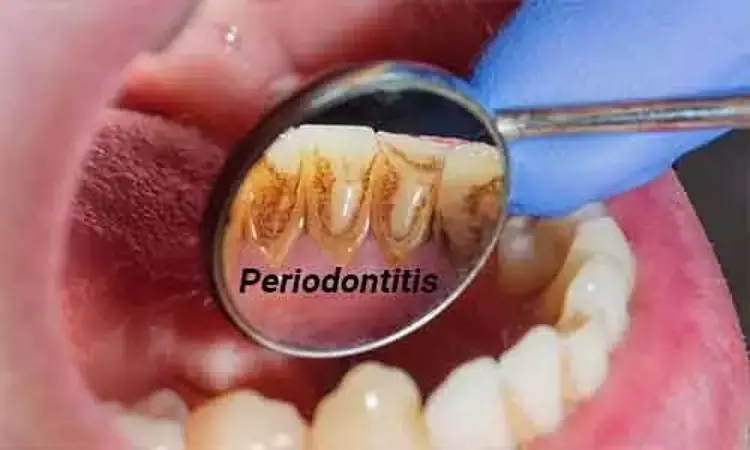- Home
- Medical news & Guidelines
- Anesthesiology
- Cardiology and CTVS
- Critical Care
- Dentistry
- Dermatology
- Diabetes and Endocrinology
- ENT
- Gastroenterology
- Medicine
- Nephrology
- Neurology
- Obstretics-Gynaecology
- Oncology
- Ophthalmology
- Orthopaedics
- Pediatrics-Neonatology
- Psychiatry
- Pulmonology
- Radiology
- Surgery
- Urology
- Laboratory Medicine
- Diet
- Nursing
- Paramedical
- Physiotherapy
- Health news
- Fact Check
- Bone Health Fact Check
- Brain Health Fact Check
- Cancer Related Fact Check
- Child Care Fact Check
- Dental and oral health fact check
- Diabetes and metabolic health fact check
- Diet and Nutrition Fact Check
- Eye and ENT Care Fact Check
- Fitness fact check
- Gut health fact check
- Heart health fact check
- Kidney health fact check
- Medical education fact check
- Men's health fact check
- Respiratory fact check
- Skin and hair care fact check
- Vaccine and Immunization fact check
- Women's health fact check
- AYUSH
- State News
- Andaman and Nicobar Islands
- Andhra Pradesh
- Arunachal Pradesh
- Assam
- Bihar
- Chandigarh
- Chattisgarh
- Dadra and Nagar Haveli
- Daman and Diu
- Delhi
- Goa
- Gujarat
- Haryana
- Himachal Pradesh
- Jammu & Kashmir
- Jharkhand
- Karnataka
- Kerala
- Ladakh
- Lakshadweep
- Madhya Pradesh
- Maharashtra
- Manipur
- Meghalaya
- Mizoram
- Nagaland
- Odisha
- Puducherry
- Punjab
- Rajasthan
- Sikkim
- Tamil Nadu
- Telangana
- Tripura
- Uttar Pradesh
- Uttrakhand
- West Bengal
- Medical Education
- Industry
Current Periodontitis severity linked to cardiorespiratory fitness: Study

Although a potential link between periodontitis and cardiorespiratory fitness might provide a reasonable explanation for effects of tooth-related alterations seen on cardiometabolic diseases, evidence is currently limited.
Mean pocket probing depth (PPD) reflecting current disease severity was consistently linked to cardiorespiratory fitness in 2 cross-sectional samples of the general population, finds a recent study.
The research was published in the Journal of Dental Research.
B. Holtfreter and colleagues from the Department of Restorative Dentistry, Periodontology, Endodontology, and Preventive and Pediatric Dentistry, University Medicine Greifswald, Greifswald, Germany investigated the association between clinically assessed periodontitis and cardiopulmonary exercise testing (CPET).
The authors assembled data from 2 independent cross-sectional population-based studies (5-y follow-up of the Study of Health in Pomerania [SHIP-1; N = 1,639] and SHIP-Trend-0 [N = 2,439]).
The study participants received a half-mouth periodontal examination, and teeth were counted. CPET was based on symptom limited-exercise tests on a bicycle ergometer.
Associations of periodontitis parameters with CPET parameters were analyzed by confounder-adjusted multivariable linear regression.
The results of the research revealed that from the total sample, mean pocket probing depth (PPD), mean clinical attachment levels, and number of teeth were consistently associated with peak oxygen uptake (peakVO2) and exercise duration in both studies, even after restriction to cardiorespiratory healthy participants.
Statistically significant associations with oxygen uptake at anaerobic threshold (VO2@AT), slope of the efficiency of ventilation in removing carbon dioxide, and peak oxygen pulse (VÉ/VCO2 slope) occurred.
Further, interactions with age were identified, such that mainly older individuals with higher levels of periodontal disease severity were associated with lower peakVO2. Restricted to never smokers, associations with mean clinical attachment levels and the number of teeth mostly diminished, while associations of mean PPD with peakVO2, VO2@AT, VÉ/VCO2 slope, and exercise duration in SHIP-1 and SHIP-Trend-0 were confirmed.
Also, in SHIP-1, mean peakVO2 was 1,895 mL/min in participants with a mean PPD of 1.6 mm and 1,809 mL/min in participants with a mean PPD of 3.7 mm.
This led the authors to conclude that "mean PPD reflecting current disease severity was consistently linked to cardiorespiratory fitness in 2 cross-sectional samples of the general population. If confirmed in well-designed large-scale longitudinal studies, the association between periodontitis and cardiorespiratory fitness might provide a biologically plausible mechanism linking periodontitis with cardiometabolic diseases."
Dr. Nandita Mohan is a practicing pediatric dentist with more than 5 years of clinical work experience. Along with this, she is equally interested in keeping herself up to date about the latest developments in the field of medicine and dentistry which is the driving force for her to be in association with Medical Dialogues. She also has her name attached with many publications; both national and international. She has pursued her BDS from Rajiv Gandhi University of Health Sciences, Bangalore and later went to enter her dream specialty (MDS) in the Department of Pedodontics and Preventive Dentistry from Pt. B.D. Sharma University of Health Sciences. Through all the years of experience, her core interest in learning something new has never stopped. She can be contacted at editorial@medicaldialogues.in. Contact no. 011-43720751
Dr Kamal Kant Kohli-MBBS, DTCD- a chest specialist with more than 30 years of practice and a flair for writing clinical articles, Dr Kamal Kant Kohli joined Medical Dialogues as a Chief Editor of Medical News. Besides writing articles, as an editor, he proofreads and verifies all the medical content published on Medical Dialogues including those coming from journals, studies,medical conferences,guidelines etc. Email: drkohli@medicaldialogues.in. Contact no. 011-43720751


